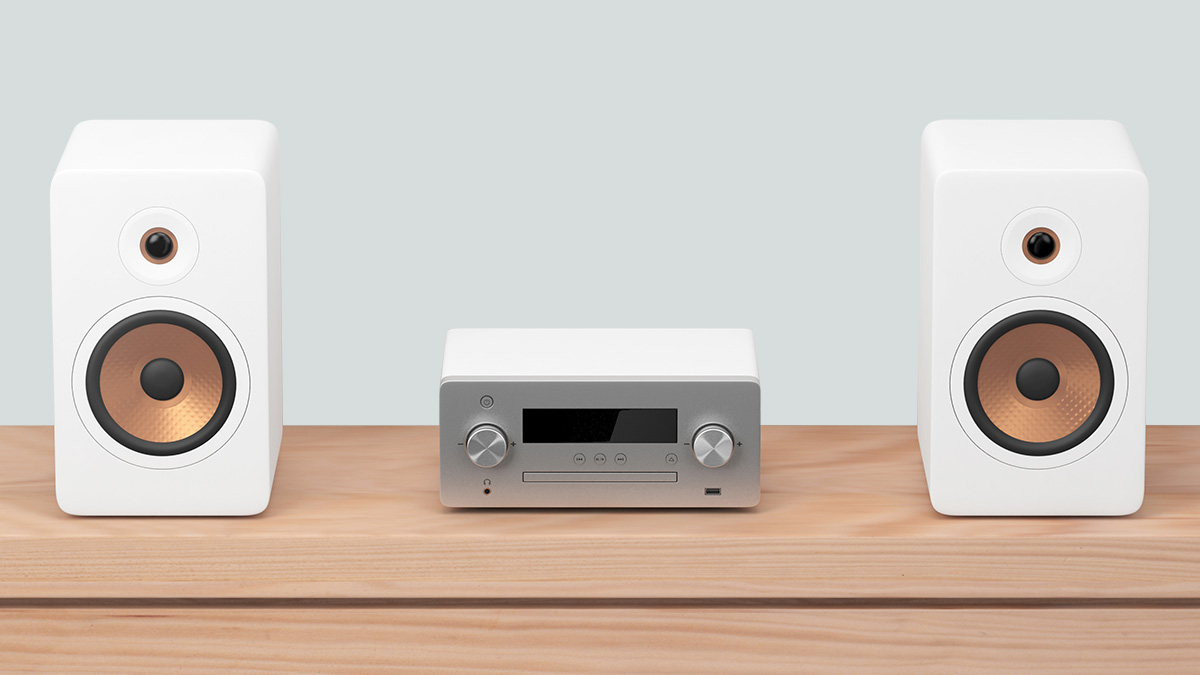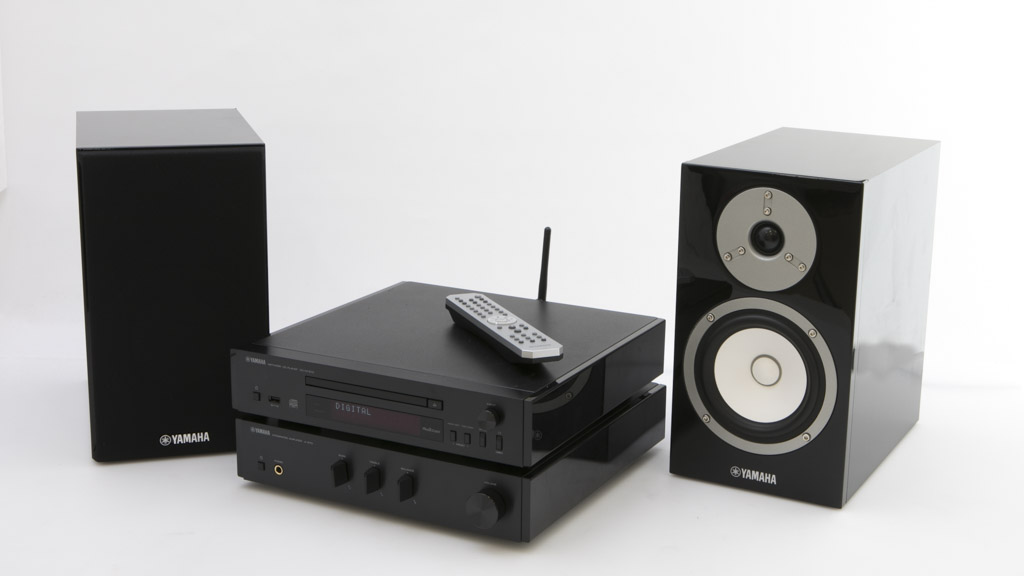Get our independent lab tests, expert reviews and honest advice.
How to find the best hi-fi mini system

The compact cousins of high-end hi-fi systems used to be a popular home audio alternative for the average Joe or Joanne looking for solid sound that didn’t demolish their wallet. But listening habits have changed; CD sales are on the decline as more and more people use their smartphones to stream or download songs. There may be a reduction in audio quality but if the popularity of streaming services is anything to go by, Bluetooth speakers and iPod docks are good enough for most of us. But that doesn’t mean the mini hi-fi scene is dead.
On this page:
- Understanding audio quality
- The stream scene
- Size counts
- What to look for
- Assessing sound in-store
- Listening habits: is hi-fi right for you?
A handful of manufacturers have updated their systems to keep with the times, combining features such as a CD player and radio alongside network access, streaming, Bluetooth and support for digital formats such as MP3 and FLAC. The lines between these systems, and Bluetooth/wireless speakers, are starting to blur, but hi-fi still delivers a broad range of listening options and generally better sound quality.
Bear in mind that your ears are the best judges of quality. If a $650 system sounds better than a $1200 model, then that’s the best option for you.
Understanding audio quality
Mini hi-fi systems have an edge over most Bluetooth speakers, as a good hi-fi system can play higher quality files compared to most speakers and docks in a similar price range, due to compatibility and Bluetooth’s negative impact on audio.
Audio goes through various stages as it’s converted from CD/vinyl to a compressed digital format such as MP3. Music played directly from a CD or record is known as uncompressed audio. That’s almost as close as you’re going to get to the original source (see HD audio, below). A digital file extracted from the CD/vinyl that retains the same sound quality is called lossless audio. FLAC and WMA are two well-known lossless formats.
While these sound just as good as CD for example, they can be quite large at 30MB or more per song, which is why formats with smaller file sizes, such as MP3 and AAC, rose to prominence. These alternatives, known as lossy files, compress the contents down to three to five megabytes per song at the expense of quality. A good ear may be able to hear the difference between an MP3 and FLAC version of the same track, depending on the type of music.
Standard and high-quality MP3 files aren’t technically on par with CDs, but they’re still good enough to satisfy most listeners. Music streaming services such as Spotify typically deliver lossless audio as a data-saving measure. These files will sound worse than a CD regardless of the system you’re using, but the effects of compression can be amplified by Bluetooth, which adds another layer of compression. For example trying to play a FLAC file via Bluetooth will negate the lossless benefits unless you use Wi-Fi
Most Bluetooth speakers don’t offer an alternative wireless connection method, although some support Wi-Fi which has enough bandwidth to transfer tracks in high fidelity. Using the auxiliary inputs may be the best way to optimise the listening experience but this would be at the expense of convenience as you need to have the media player physically connected to the speaker. Networked mini hi-fi systems however, can play CD, lossless and lossy formats using Bluetooth, Wi-Fi and direct connections such as auxiliary and USB.

The stream scene
Streaming from your mobile, tablet or PC to a speaker via Bluetooth, from a service such as Spotify, is a popular way to consume music. Bluetooth, however, can compress the files which reduces sound quality. Modern mini hi-fi systems that support networking, build a link to one or more streaming services into the system, using a feature called ‘connect’.
Rather than sending the song from your phone to the system via Bluetooth, your mobile acts as a remote control, while the hi-fi hub communicates with the Spotify servers directly. The additional level of compression added by Bluetooth is removed and thus, the sound is better. This is particularly useful if you subscribe to services that offer high-fidelity streaming such as Tidal. Where Bluetooth compresses a music file’s size and therefore compromises quality, a speaker compatible with Wi-Fi has enough bandwidth to transfer tracks in high fidelity. Somewhat tech-savvy users can even store their lossy or lossless files on a networked drive (NAS) or computer, and stream them to a mini hi-fi system if Wi-Fi is built in.
Size counts
A pair of external speakers will almost always sound better than a portable Bluetooth device. The components are larger and can be positioned to allow better separation of stereo sound – two important features which single Bluetooth speakers/iPod docks don’t have. They generally pack a bit of a punch too, so you can crank up the tunes without worrying about poor sound quality and distortion (to a point, remember, everything has a limit).
Other advantages
- Most units don’t use proprietary speaker cables, which gives you the freedom to swap the default pair for your preferred brand. Just make sure the amp can support the speaker configuration that you’ve chose, and that the ohms (impedance) are within the specified range.
- They have auxiliary ports that let you connect a mobile device, laptop or iPod directly into the system, so you don’t need to worry about Bluetooth.
- Many include a remote control, or remote control app.
- You can connect them to your TV/projector/monitor.
Disadvantages
- Mini hi-fi systems tend to have fewer inputs compared to a dedicated amp/receiver, leaving you with limited space to connect additional devices that aren’t built into the hub, such as a turntable.
- They aren’t portable.
- Most don’t support 5.1 surround sound, but you may find some models with a subwoofer input.
What to look for
DLNA
Devices that support the Digital Living Network Alliance can communicate with one another. This will let you stream audio stored on a network-attached storage device (NAS) or computer to your PC across a home network.
Front-facing controls
This gives you the option to place the hub on a table, shelf, desktop etc., or in an entertainment unit with adequate ventilation. Some models place the buttons on top of the hub, leaving the controls inaccessible when placed in a unit.
Front-facing USB ports
Unlike speakers or an auxiliary cable, you’ll probably plug and unplug a USB drive from the hub pretty regularly. Front-facing inputs are much easier to access than those on the rear.
High-definition audio support
FLAC 96/24 and 192/24 technically deliver higher quality audio than CD (although whether this translates to an audible difference is up for debate). Still, if you’re a serious audiophile that can hear the difference in quality, you may want to consider a unit that can play HD audio files.
Multiple formats
If you’ve been ripping CDs and, ahem, “obtaining” audio files for more than ten years, you’ve probably amassed a bunch of different, somewhat obscure, formats from days gone by. While you probably won’t find a hub that can handle everything you throw at it, check the specs to see if it can play the majority of files you own.
Networking
All networked units support the 2.4GHz wireless standard which is suitable for streaming. However, some support dual-band (5GHz) which is faster and less congested in a busy home with many Wi-Fi-hungry devices that cause more interference with the 2.4GHz standard. Other hubs have Ethernet inputs (LAN). Both Wi-Fi options have enough bandwidth for audio streaming but they can drop out when the network is stretched across many devices, or if the signal is weak. Ethernet isn’t as convenient, but there’s no risk of dropouts. If you’re going to stream audio over a network, Ethernet or dual-band are ideal options.
Other connection options
NFC (near-field communication) lets you easily sync compatible devices to the hub for streaming, Toslink is an optical connection system that delivers hassle-free connectivity between devices such as DVD/Bluray players and your TV. Make sure you’ve got enough relevant connections for your home entertainment devices.
Remote control
A well-made remote lets you access, navigate and control the entire system. Button size, spacing and readability are important factors, particularly when using a remote in low-light environments. Unlike hi-fi systems of yesteryear where the remote was crucial, most modern models with networking capabilities can connect to an official remote control app on your smartphone.
Streaming and radio
Look for services based on your needs. If you stream a lot of music, pick up a model with Spotify, Deezer, Tidal or online radio support for example. Apple users should consider one with AirPlay. Many also come with a digital radio (make sure it supports DAB+. DAB standard doesn’t work in Australia).

Assessing sound in-store
When shopping for hi-fi, always try before you buy. There’s no way to tell if a system is suited to your ears without giving it a go. Keep these tips in mind when you head into a store:
- Take your own music. A sample session won’t be very useful if you’re into jazz and the salesperson is cranking heavy metal.
- Adjust settings to suit your ears and music. Some stores may set equalisers to make their audio samples sound great, but that isn’t an accurate representation of the system.
- Turn up the volume. This will reveal how far you can push the speakers before distortion sets in.
- Try to visit outside busy periods. It’s difficult to assess sound quality in a store filled with customers.
Listening habits: is hi-fi right for you?
At the end of the day, the best option comes down to your ears and listening habits. If streaming services are your primary source of music and you aren’t chasing higher sound quality, then you may not need to invest in a mini hi-fi system. If you’re still spinning CDs, playing FLAC files and even want your MP3 files/Spotify streams to sound a little better, consider hi-fi. The best thing to do is trust your ears. Head into a store, sample the range of options while keeping your listening habits in mind, and a suitable system should eventually reveal itself.






